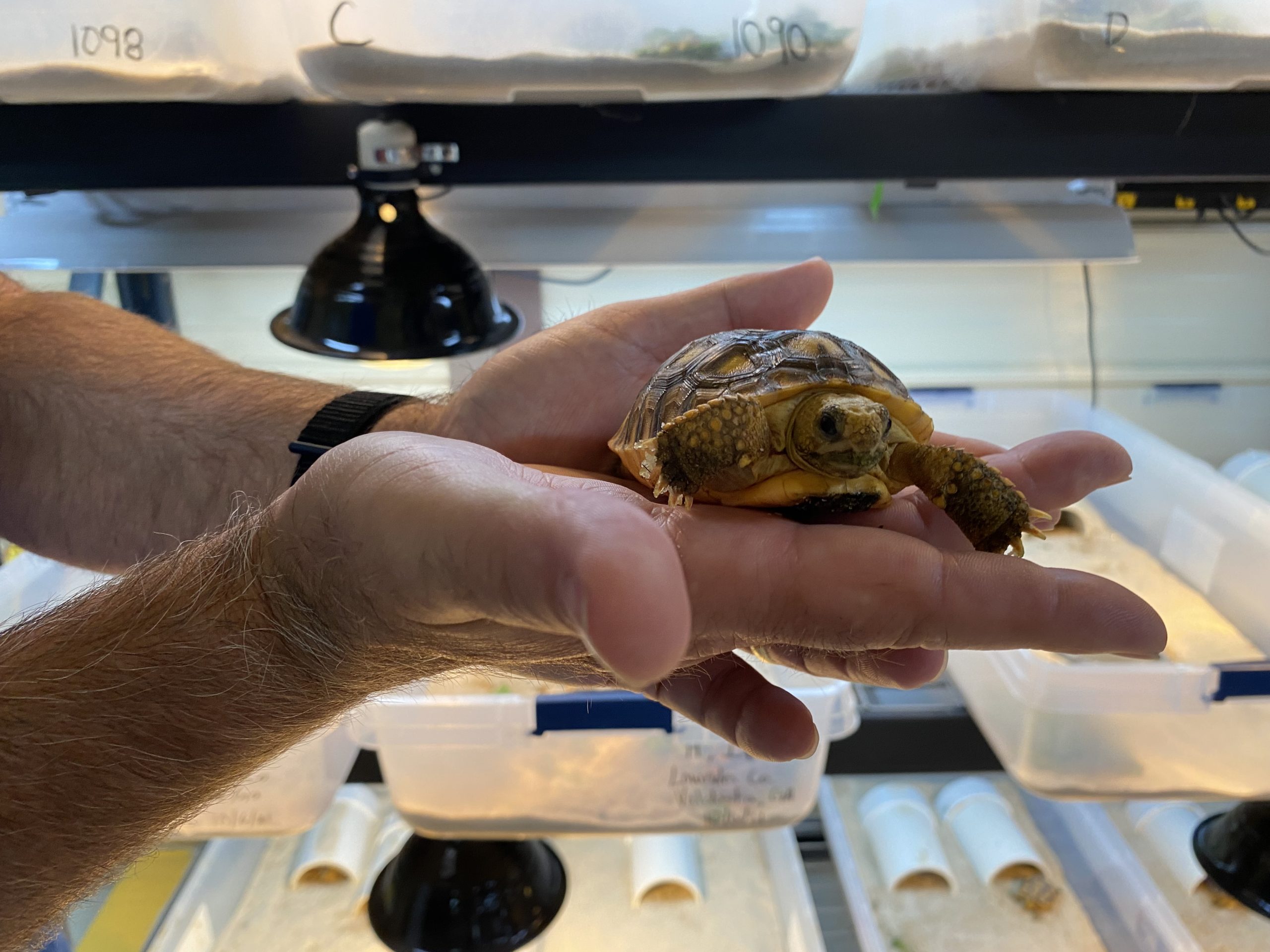If you live in the South, the tortoise you see trying to cross the road may be more than a symbol of patience. Gopher tortoises are a species of high conservation concern in Alabama and are listed as “threatened” by the U.S. Fish and Wildlife Service.
ALDOT knows the importance of keeping the gopher tortoise safe, and in 2004, teamed up with the U.S. Fish and Wildlife Service to form a Gopher Tortoise Conservation Area in rural Mobile County.
The conservation area comprises nearly 700 acres of longleaf pine, a prime habitat for the gopher tortoise. More than 100 gopher tortoises have been removed from ALDOT project corridors and relocated to this special ecological site.
“Transportation projects can impact the tortoise through loss of habit, habitat fragmentation, or direct injury or mortality,” explained biologist Josh Rowell with the U.S. Fish and Wildlife Service. “The development of the Gopher Tortoise Conservation Area makes it possible for the species to be relocated out of harm’s way and be managed and protected in perpetuity,” said Rowell.
In collaboration with the Federal Highway Administration (FHWA), the Fish and Wildlife Service develops policy and guidance for transportation planning. The technical information the Service provides helps the FHWA, ALDOT, and local transportation planning organizations to develop plans with minimal environmental impacts.
“The Alabama Department of Transportation has always been proactive in protecting wildlife as they work on multiple infrastructure projects,” said Rowell. “These projects can significantly impact imperiled species, their habitats, and ecosystems; the Service is proud to join forces with ALDOT as they continue to develop in our state.”





